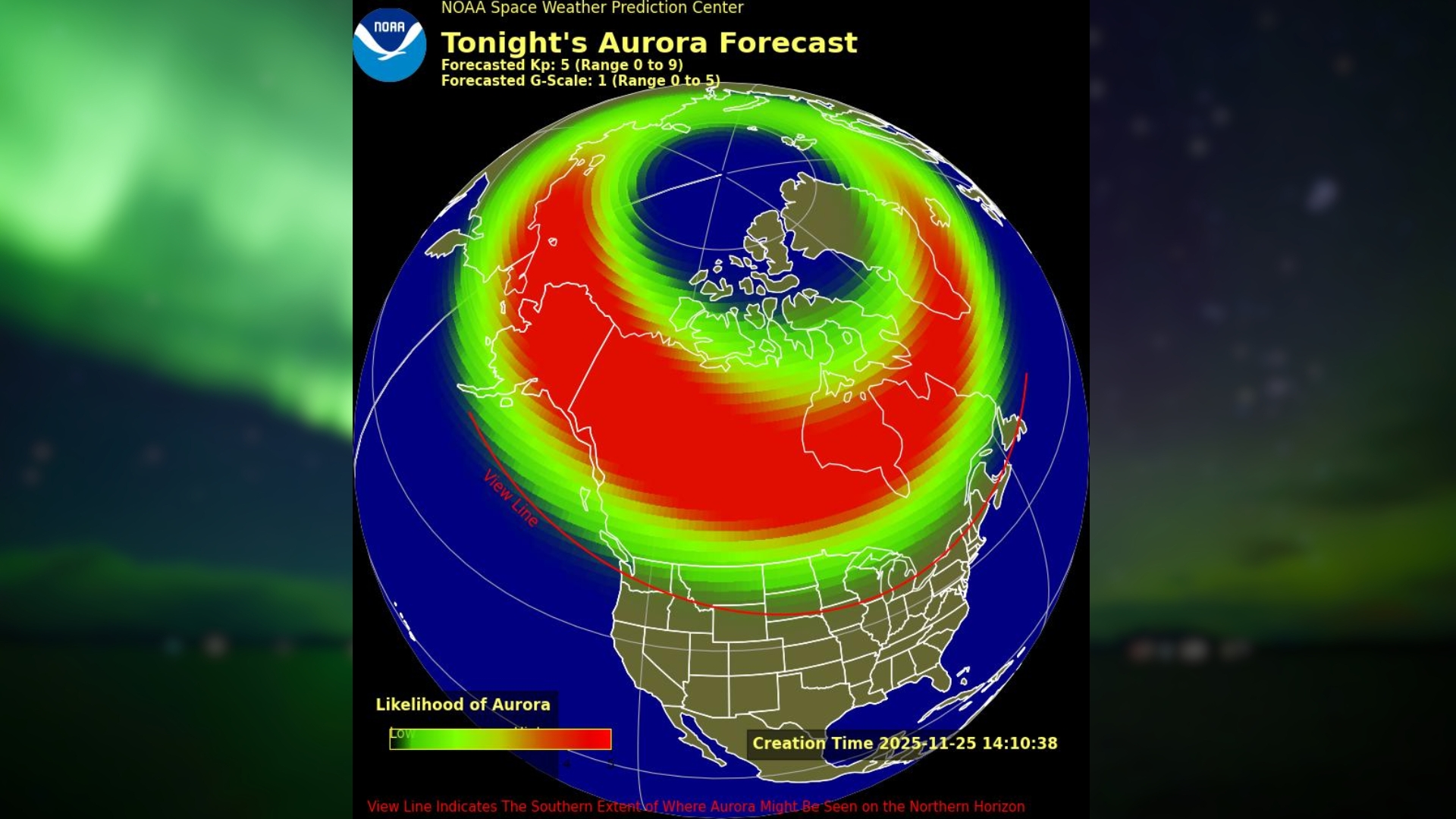The northern lights could put on a show across parts of the U.S. tonight due to elevated geomagnetic activity driven by a high-speed solar wind stream coming from an Earth-facing coronal hole, according to the National Oceanic and Atmospheric Administration’s (NOAA) Space Weather Prediction Center.
Geomagnetic activity is expected to reach minor (G1) storm levels overnight, which could be good news for aurora chasers as it increases the chance of seeing the northern lights farther south than usual.
Where can I see the northern lights tonight?
The aurora forecast, courtesy of NOAA’s Space Weather Prediction Center. (Image credit: Map: NOAA Space Weather Prediction Center, background image: Daisy Dobrijevic)States that could see auroras tonight
Based on the latest NOAA aurora forecast map, the following 14 U.S. states appear fully or partially above the aurora view line:
AlaskaNorth DakotaMinnesotaMontanaMaineMichiganWisconsinSouth DakotaVermontNew HampshireIdahoWyomingIowaNew York
Remember, auroras can be fickle creatures. The list is based on current forecast data, but if conditions strengthen and skies are clear, auroras could reach much farther south than expected. Then again, if conditions don’t align, we might end up with a “nothing burger” and no auroras at all.
Northern Hemisphere aurora forecast courtesy of the U.K. Met OfficeWhat time should I look for the northern lights tonight?
The northern lights could be visible across 14 U.S. states tonight (Nov. 25-Nov. 26) as soon as it gets dark, so it’s worth keeping an eye on the sky throughout the evening, especially in areas with clear, dark skies.
According to NOAA’s 3-day forecast, geomagnetic storm activity is expected iiiiiklto be best at the following times:
4 p.m. – 7 p.m. EST (2100-0000 GMT): Minor G1 level storming possible10 p.m. – 1 a.m. EST (0300-0600 GMT on Nov. 26): Minor G1 level storming possibleHow can I see the northern lights from where I live?
If you live in one of the 14 U.S. states forecasted to catch a glimpse of the northern lights tonight, there are a few things you can do to give yourself the best chance of seeing them.
Find a north-facing vantage point with a clear view of the northern horizon, as far from light pollution as possible.Use your phone camera to scan the sky, as a phone camera is great at picking up faint auroras before your eyes spot them. This will give you a good idea of which direction to focus your attention.Try and let your eyes adapt to the dark for t least 30 minutes; this will help your night vision develop.Wear warm clothing! Part of the fun of aurora hunting is the chase. Be prepared to sit or stand for hours if conditions are looking promising as you won’t want to miss the show when it starts!
We recommend downloading a space weather app that provides aurora forecasts based on your location. One option I use is “My Aurora Forecast & Alerts,” available for both iOS and Android. However, any similar app should work well. I also use the “Space Weather Live” app, which is available on iOS and Android, to get a deeper understanding of whether the current space weather conditions are favorable for aurora sightings. Want to capture the perfect photo? Our how to photograph auroras guide can help.


